Avoid both packaging and food waste with a waste free lunch box.
Having a waste-free lunch box helps reduce the amount of plastic and food waste that gets thrown away each day. It also encourages us to plan ahead and make healthier choices in what we eat. Packing a waste-free lunch doesn’t have to be hard or time consuming, but can easily become part of your daily routine.
How can you pack a waste free lunch?
In this article we’ll cover how you can conveniently have a waste free lunch box by:
- Using reusable containers and utensils
- Planning ahead to avoid food waste
- Purchasing snacks with no or minimal packaging
- Making homemade snacks that can be prepared ahead of time.
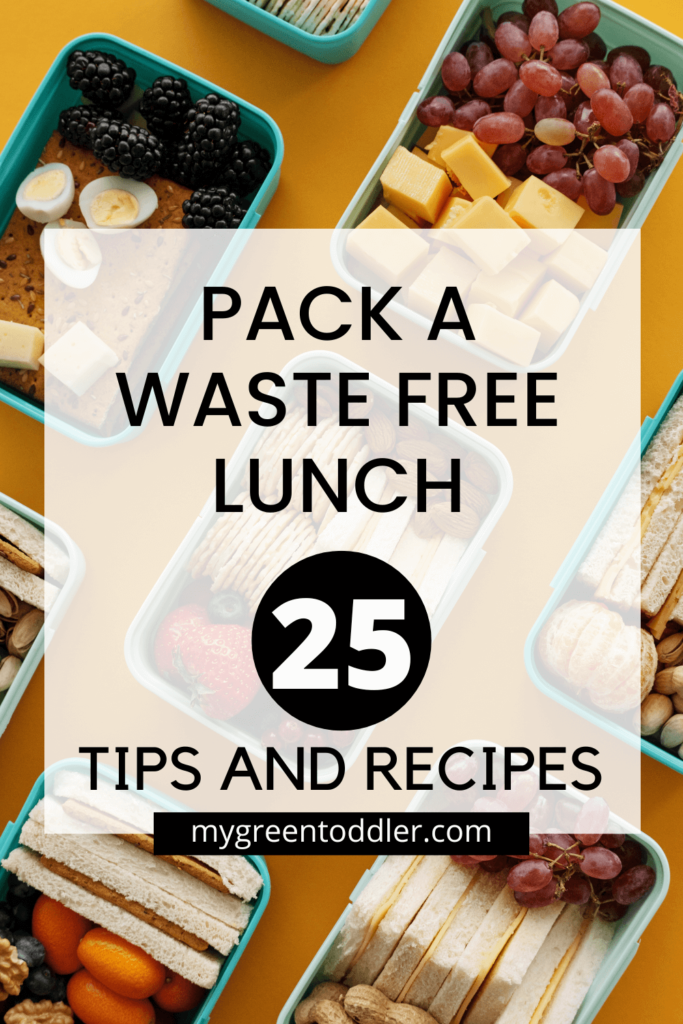
Choose to re-use – get set up with the right equipment
1. Acquire a reusable lunch box
Choose a reusable lunch box that comes with features like separate compartments (preferably adjustable), durable construction, and easy to clean. If it’s for young children, also make sure they can open it themselves without an adult helping.
Getting a lunch box with separate sections will eliminate the need to package individual snack and lunch components without worrying about spilling or mixing with other items.
You can feel confident that your meal will stay secure without worrying about it spilling or mixing with other items in the bag.
As always, try to procure what you need second hand but if you can’t find them I recommend Yumbox or Bentgo, both from Biome.
2. Use silicone patty pans to create extra separation
If you haven’t used silicone patty pans, they are amazing and I highly recommend them for making muffins waste free but they can also be used to create extra separation in a lunchbox. They can be useful to separate cheese and crackers just so that they’re not touching and making the crackers stale or to keep small fruit like grapes or blueberries together.

3. Use reusable yoghurt pouches
I understand that squeezy yoghurt pouches are extremely convenient for families but they produce a lot of plastic waste. If you have reusable yoghurt pouches, it is very little effort to fill them and I can confirm Little Mashies ones are easy to clean too. You can even pre-fill a whole bunch of them so they’re ready for the week.
4. Pack reusable cutlery
This can be as simple as grabbing a fork from the kitchen drawer or having a travel cutlery set to carry with you.
5. Find alternatives to ziploc bags
This can be as simple as hunting through the kitchen cupboard and finding a container that can be used instead of a ziploc bag. If you already have ziploc bags, wash them to keep them in use a little longer. You can also purchase reusable zip lock bags that are durable and easy to clean.
Reduce food waste
6. Get your child’s input about what they want to eat
When I was in high school, my parents would send me to school with a sandwich in my lunch box made with multigrain bread. I asked for wholemeal bread instead but they refused and so I threw my sandwich in the bin each day. Had I followed number 8, my parents might have got the message and relented but instead that was a huge waste of food over the years.
The point of that story – ask your kids what they want to eat! Of course the lunch box items still need to suit you in terms of being healthy and convenient but you can give them some suitable options to choose from to avoid the food you prepare being unappealing to your kids and subsequently being wasted.
7. Get kids to help make up their lunch box
Kids will be much more interested in the contents of their waste free lunch box if they’ve not only been able to choose what’s in their lunch but also prepare it. It gives them a sense of ownership and responsibility that they can feel proud of.
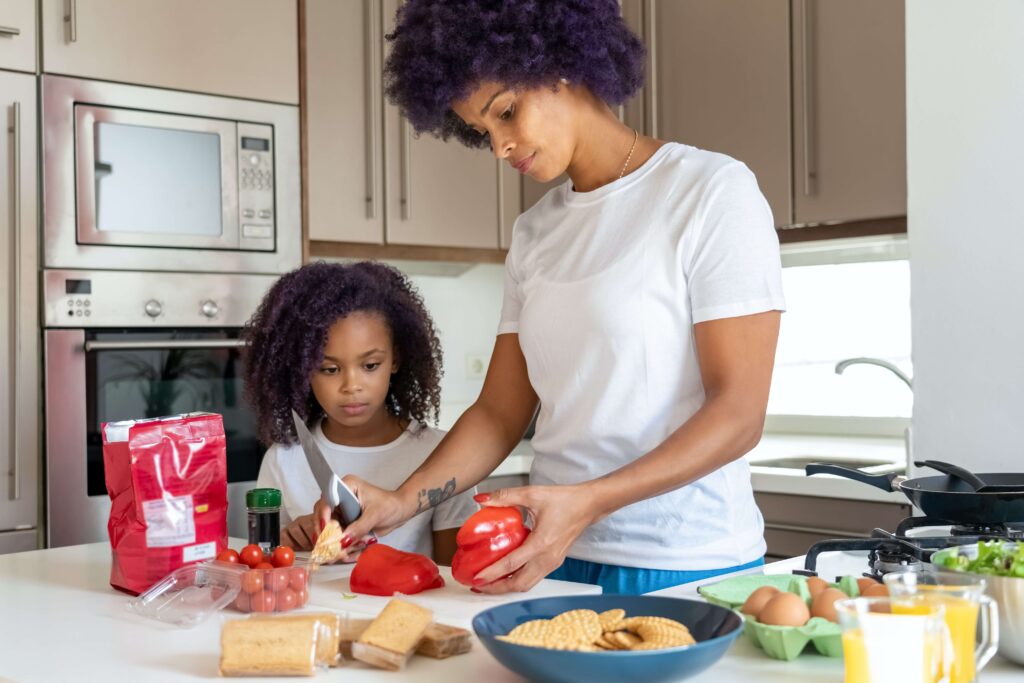
8. Bring leftover food home
Encourage your kids to bring leftover food from their lunch box home with them. This has a dual purpose. 1) Your kids can eat that food after school to avoid it being wasted and 2) You can see if your child is not eating all the food you pack and then have a conversation with them about whether it’s too much food or they didn’t like it and adjust accordingly.
9. Keep food cool with an ice pack
Include an ice pack or frozen bottle of water with the lunch box so that all the food is kept cool throughout the day and is still safe to eat. It is a big help if there is leftover food in the lunch box that can then be eaten after school.
Include zero waste snacks
This section is all about snacks that can be purchased from a bulk food store with no packaging or from the supermarket in bulk with minimal packaging and added to waste free lunch boxes as a snack with no extra preparation required.
10. Whole fruit
Apples are my favourite no prep whole fruit because if they don’t get eaten they can travel back and forth in a school bag for a week! I like to include them as an emergency if everything else gets eaten. Other whole fruits that don’t need to be cut up are bananas, mandarins, nectarines, apricots and pears.
11. Small fruit
Small fruit like grapes, berries and cherry tomatoes don’t require any preparation. I like using them to fill small gaps in the lunch box created by other foods.
(For under 3 year olds though, grapes and cherry tomatoes should be cut in half to avoid any risk of choking)
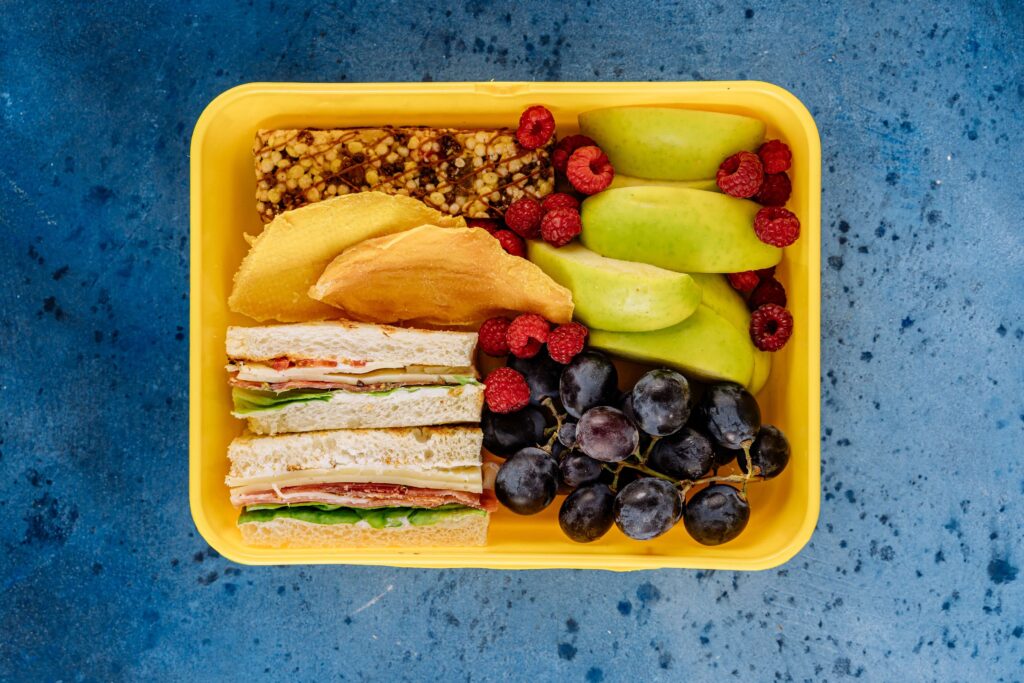
12. Dry Cereal
Breakfast cereals that have large pieces are great for children to munch on as a snack. Messy Monkeys, Cheerios and fruit filled pillow cereal are all great options.
13. Nuts
NOTE: Do not include nuts in school lunches due to allergies
But for family outings or adult lunch boxes, nuts are a very easy and healthy option for a waste free lunch box.
14. Dried fruit
Dried fruit is a very easy snack to include in a waste free lunch box. However be wary of portion control – too much dried fruit can cause digestive problems and you may be shocked at how much sugar is in dried fruit.
15. Baked pretzels
A big pack of pretzels will go a long way for a minimal waste snack and is great as a savoury snack to counter the preference most children have for sweet foods.
16. Yoghurt
Yoghurt can be purchased in large tubs to minimise the packaging and makes a convenient snack. You can either put in a small container with a spoon or use a reusable yoghurt pouch like in number 3.
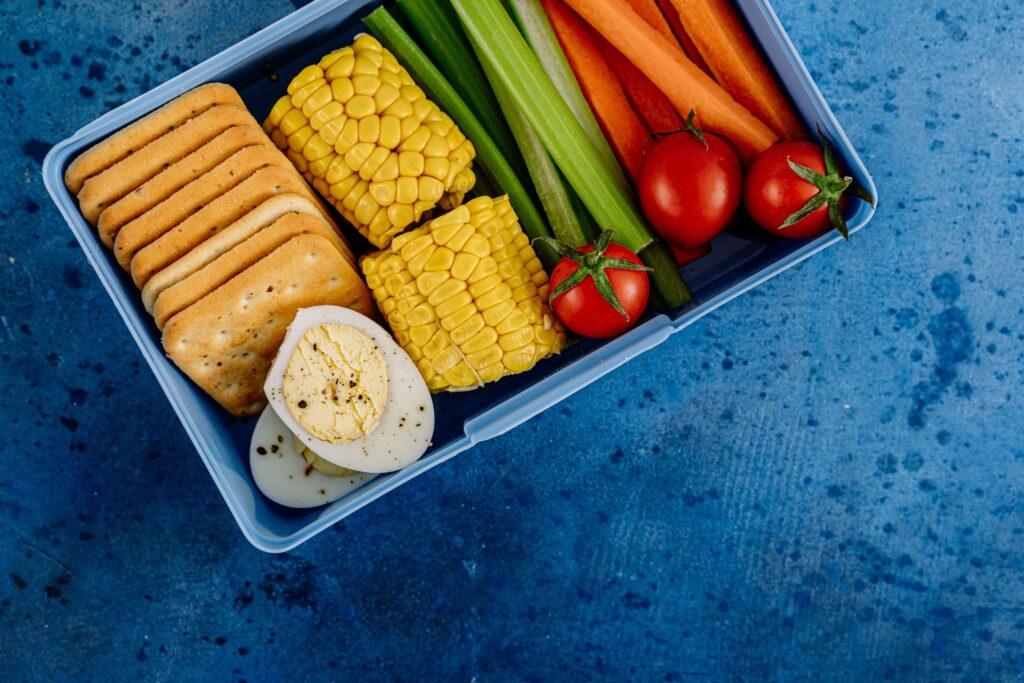
17. Cheese and crackers
A large packet of crackers and block of cheese have minimal packaging for days worth of snacks. Keeping the cheese and crackers separate from each other with a bento box style container or patty pans is important though to keep the crackers crisp.
18. Veggie sticks and dip
Ok so there’s a tiny bit of preparation involved in cutting up veggie sticks. But did you know that carrots can be cut up in bulk and stored in water in the fridge for at least two weeks??? This was a major revelation when I found this out and it saves me heaps of time packing lunch boxes in the mornings having the carrot already cut up.
19. Sushi
Many places display sushi rolls with no packaging so you can bring your own reusable container to bring it home in. If I’m passing somewhere that sells sushi like this, I’ll buy it for my daughter to have in her lunch box the next day.
Homemade snack recipes
For convenience, these are all recipes that can be prepared at least a week in advance.
20. Beetroot Chocolate Muffins
Including beetroot in choc chip muffins adds extra nutrients, flavour and colour. These delicious chocolate beetroot muffins are so easy to make and a great lunchbox snack. Store in the freezer for up to six weeks.
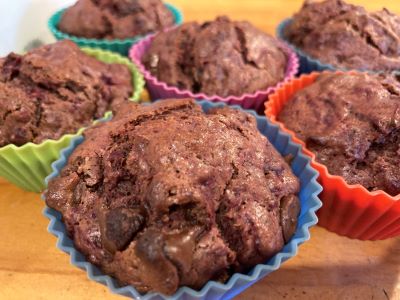
21. Sweetcorn Fritters
Sweetcorn fritters are easy to make and can be stored in the freezer for up to one month. Plus anything that gets vegetables into my kids I’m a fan of!
22. Boiled Eggs
It doesn’t get any simpler than boiling an egg and this is such a nutritious idea for a waste free lunch box. Boiled eggs will keep in the fridge for up to one week.
No Bake Energy Bites
No bake energy bites combine a nutritious oat base with natural sweeteners, giving healthy, long lasting energy. They are easy to make and ideal for getting children involved in preparing their own food.
23. Strawberry Fruit Roll Ups
Make your own strawberry fruit roll ups with just a couple of ingredients and only a little honey for extra sweetness. It’s a great snack to make from scratch with the kids.
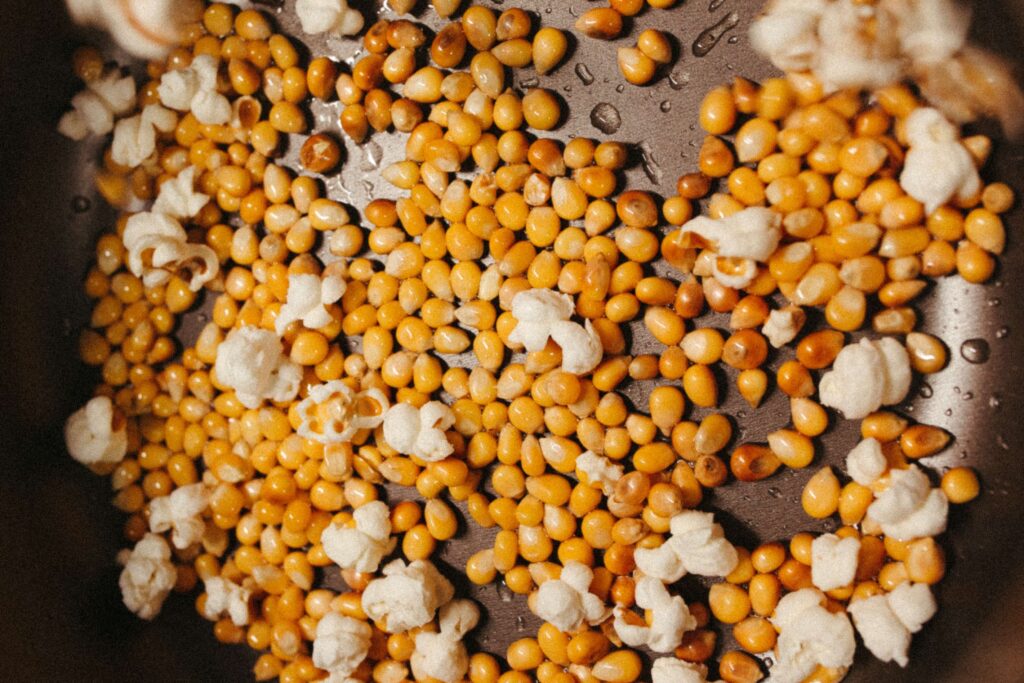
24. Popcorn
I know it is sooo easy just to buy a bag of popcorn from the supermarket now but it really only takes 10 minutes to prepare your own popcorn. And you can do enough for the week in one go.
25. Blueberry Sour Cream Muffins
These classic blueberry sour cream muffins are soft & moist on the inside with a crisp, sugar-coated top. Easy to make, and absolutely delicious, these will become your new favorite blueberry muffins recipe. Can be stored in the fridge for up to six days or the freezer for two months.

These are such great ideas! Not only is this healthier for the planet, but it’s also so good for your body to eat such fresh foods. I definitely need to get some of the cute reusable liners!
These recommendations for eco-friendly lunch boxes are fantastic, and as a passionate cook, I also appreciate the recipes you provided. I’m excited to try out some of these recipes for my children’s lunch boxes, and I’m sure they will love them too.